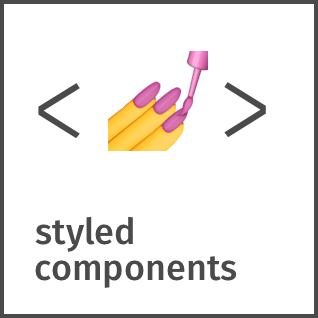Design Philosophy
- styled-components:
styled-components promotes a component-centric approach to styling, allowing developers to encapsulate styles within components. This philosophy enhances maintainability and readability of styles in large applications.
- @mui/material:
@mui/material is built around Material Design, providing a consistent and modern aesthetic across components. It emphasizes usability and accessibility, ensuring that applications are visually appealing and user-friendly.
- react-virtualized:
react-virtualized is optimized for performance with large datasets, focusing on rendering efficiency and user experience. It provides tools for virtual scrolling and windowing, ensuring smooth interactions even with extensive data.
- react-bootstrap:
react-bootstrap adheres to Bootstrap's design principles, focusing on simplicity and responsiveness. It allows developers to create visually consistent applications quickly by utilizing Bootstrap's established styles and components.
- react-grid-layout:
react-grid-layout is designed for dynamic and interactive layouts, enabling users to customize their UI by dragging and resizing components. It focuses on user experience and flexibility in layout management.
- react-grid-system:
react-grid-system provides a straightforward grid system that allows for responsive design without complexity. Its focus is on simplicity and ease of use, making it accessible for developers of all skill levels.
- react-flexbox-grid:
react-flexbox-grid leverages Flexbox for layout, promoting a flexible and responsive design approach. It is lightweight and minimalistic, making it easy to integrate without imposing a specific design language.
Component Variety
- styled-components:
styled-components allows for the creation of styled components, enabling developers to design custom UI elements while maintaining a clean separation of styles.
- @mui/material:
@mui/material offers a wide range of components, from basic UI elements to complex data display components, making it suitable for diverse application needs.
- react-virtualized:
react-virtualized focuses on performance-oriented components for lists and tables, providing specialized components for efficient data handling rather than a broad range of UI elements.
- react-bootstrap:
react-bootstrap provides a comprehensive set of Bootstrap components, covering most UI requirements, including forms, buttons, modals, and navigation elements.
- react-grid-layout:
react-grid-layout specializes in grid-based layouts, offering components that support drag-and-drop functionality and customizable layouts for dashboards.
- react-grid-system:
react-grid-system provides a robust grid system but fewer UI components, making it ideal for projects that need layout management without additional UI complexity.
- react-flexbox-grid:
react-flexbox-grid focuses primarily on layout components, providing a lightweight solution for responsive design without extensive UI elements.
Performance Optimization
- styled-components:
styled-components can impact performance if not used carefully, but it allows for dynamic styling and scoped styles, which can enhance maintainability and reduce CSS conflicts.
- @mui/material:
@mui/material components are optimized for performance with built-in accessibility features, ensuring that applications run smoothly while adhering to best practices.
- react-virtualized:
react-virtualized excels in performance by only rendering visible items, significantly improving rendering times for large lists and tables, making it ideal for data-heavy applications.
- react-bootstrap:
react-bootstrap is lightweight and leverages Bootstrap's efficient CSS, ensuring fast load times and responsive behavior without compromising on design.
- react-grid-layout:
react-grid-layout is designed for performance with dynamic layouts, efficiently managing the rendering of components based on user interactions and visibility.
- react-grid-system:
react-grid-system is lightweight and straightforward, ensuring that performance remains high while providing responsive layout capabilities.
- react-flexbox-grid:
react-flexbox-grid is minimalistic and focuses on Flexbox, resulting in a lightweight library that enhances performance without unnecessary bloat.
Learning Curve
- styled-components:
styled-components is relatively easy to learn for developers familiar with CSS, allowing for a smooth transition to CSS-in-JS styling.
- @mui/material:
@mui/material has a moderate learning curve, especially for developers unfamiliar with Material Design principles, but its documentation is comprehensive and helpful.
- react-virtualized:
react-virtualized has a steeper learning curve due to its performance-oriented features and API, but it is invaluable for applications dealing with large datasets.
- react-bootstrap:
react-bootstrap is easy to learn for those already familiar with Bootstrap, making it accessible for developers looking to integrate Bootstrap into React applications quickly.
- react-grid-layout:
react-grid-layout may require some learning to fully utilize its drag-and-drop features, but its API is intuitive for developers familiar with grid layouts.
- react-grid-system:
react-grid-system is straightforward to learn, focusing on grid layouts without complex components or configurations, making it ideal for beginners.
- react-flexbox-grid:
react-flexbox-grid has a gentle learning curve, especially for those familiar with Flexbox, making it easy to adopt for responsive layouts.
Customization and Theming
- styled-components:
styled-components excels in customization, allowing developers to create dynamic styles based on props and themes, making it highly flexible for various design needs.
- @mui/material:
@mui/material provides extensive theming capabilities, allowing developers to customize the look and feel of components easily, ensuring brand consistency across applications.
- react-virtualized:
react-virtualized is focused on performance rather than styling, offering limited customization options, making it less ideal for applications that require extensive theming.
- react-bootstrap:
react-bootstrap allows for customization through Bootstrap's theming capabilities, enabling developers to adjust styles globally or per component, but may require additional CSS for deeper customization.
- react-grid-layout:
react-grid-layout allows for customization of grid items, but theming is more limited compared to other libraries, focusing on layout rather than style.
- react-grid-system:
react-grid-system provides basic customization options for grid layouts but does not focus on theming, making it less suitable for projects requiring extensive design changes.
- react-flexbox-grid:
react-flexbox-grid offers limited customization options, focusing primarily on layout rather than extensive theming, making it less flexible for design changes.


























